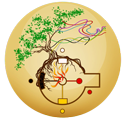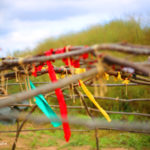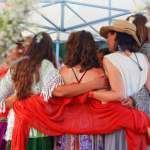The Kiva – the Earth
The kiva – a circular excavation – dug in the body of Mother Earth – open to heaven, with five altars – for the four cardinal points and the fire in the centre, serves as a place of ceremony. In the Kiva, keepers of old and rediscovered wisdom, elders from all peoples and all continents, shamans and mediators between the worlds, each in their tradition and yet together, sending a powerful energy into the world.
Three elements embodied in the Kiva:
The round sacred shape of the Kiva to collect and reinforce the prayers.
The elders who offer their prayers from heart, each in their own tradition and manner.
The fire that concentrates and transports the prayers.
On the first day, the Kiva, the sacred space, opens to give everyone the opportunity to enter and lay medicine items they want to have blessed (talismans, candles, small water bottles, jewellery, and photos of family members) towards the west altar. These objects remain in the Kiva for the four days charge with the energy of the prayers.
Afterwards the elders and the fire-keepers only enter the Kiva.
Twice a day there is now a Kiva-Ceremony the elders bring their prayers, their heart energy, their dances, songs, and their very own kind of tradition into the Kiva.
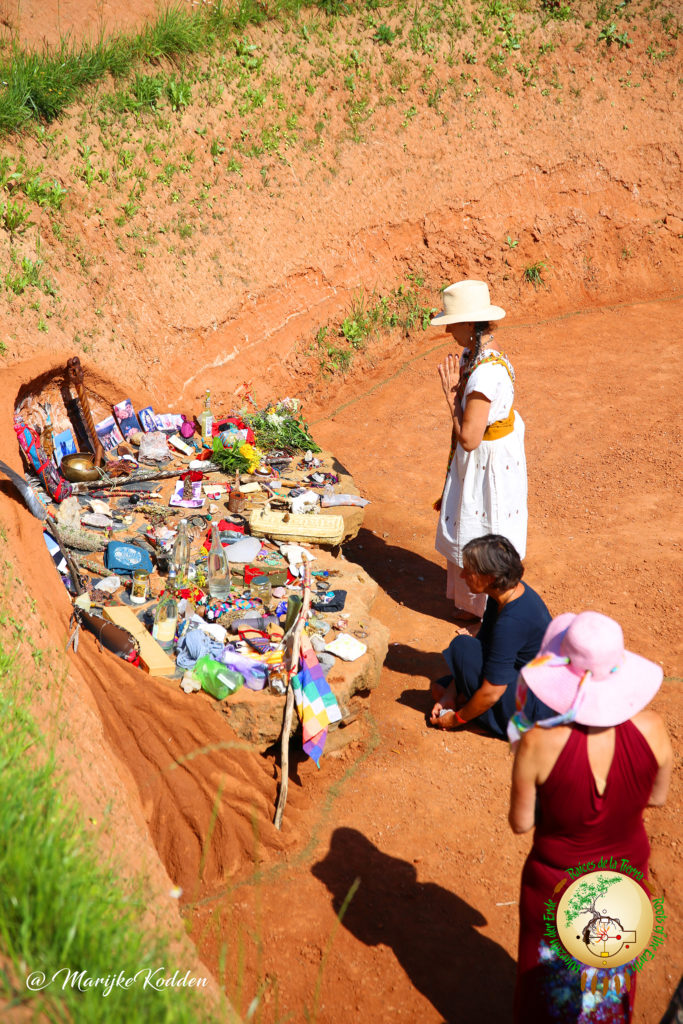
The fire collects and stores the energies over a period of three days. The participants surround the Kiva and support with their presence and attention. The fire centres all energy in the Kiva.
In the night of the fourth day, the energy rises to heaven and spiritual world. With the raindrops, the blessing spreads over the country and in the world.
On the fourth and final day, the elders thank all helping beings, complete the ceremony, and sever their connection with the fire.
Afterwards, the participants re-enter the Kiva and remove their items from the altar.
Topics of the four days and the four years
The Roots of the Earth ceremony always takes place for four years in one place in one country.
The four years and four days are dedicated to different topics:
In the first year and on the first day, the prayers are dedicated to our creator, the Great Spirit, and all the spiritual beings are invited to pray with us for Mother Earth.
In the second year and day, our families are honoured in blood and spirit, because there is the basis of our strength and joie de vivre.
In the third year and day, we honour our ancestors and friends because they accompany and support us.
In the final fourth year and day, we dedicate our prayers to healing our mother earth and ourselves in order to receive guidance, protection, joy and health on our life path.
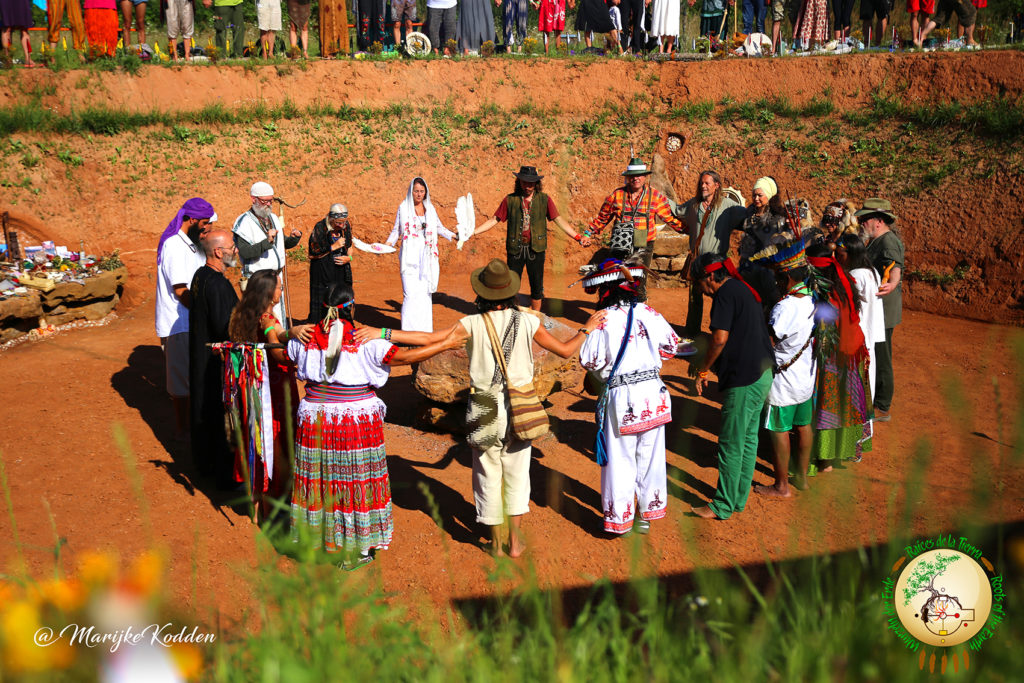
The elders
The elders have their place at the entrance to the Kiva. In the ceremony, they enter the Kiva and effectuate blessings through their prayers and wisdom. They are the representatives of the different peoples, countries and continents who, through encounters and common prayers, build bridges between cultures and religions and create peace. The elders commit themselves over the four years of a cycle in the Kiva to support the ceremony with their prayers and to render this service to the earth. During the four days, there are times when they pass on their wisdom and knowledge.
The participants
Young or old, everyone is welcome. Everyone helps and works together to ensure that everyone is well served and that with this ceremony we all grow together into a worldwide community.
Working together around the kiva we get to know each other better and expand the family of the Roots of the Earth, make friendships all over the world that nourish our hearts with joy.
Activities for children are planned (a children’s sweatlodge, natural art and painting, stories and more).
Drum and moon women
The drum and moon women are part of the ceremony. These two poles, placed to the left and right of the entrance to the Kiva, maintain the balance and equilibrium of the ceremony and support the prayers of the elders.
The drum as the heartbeat of mother earth. The drum rhythm lets the songs rise to Father Heaven. The drum forms the framework of the ceremony; it calls us to gather at the Kiva, opens and ends the ceremony. Elders can have the drum and singers assist them in their prayers with songs of their choice. The drum radiates the energy outwards.
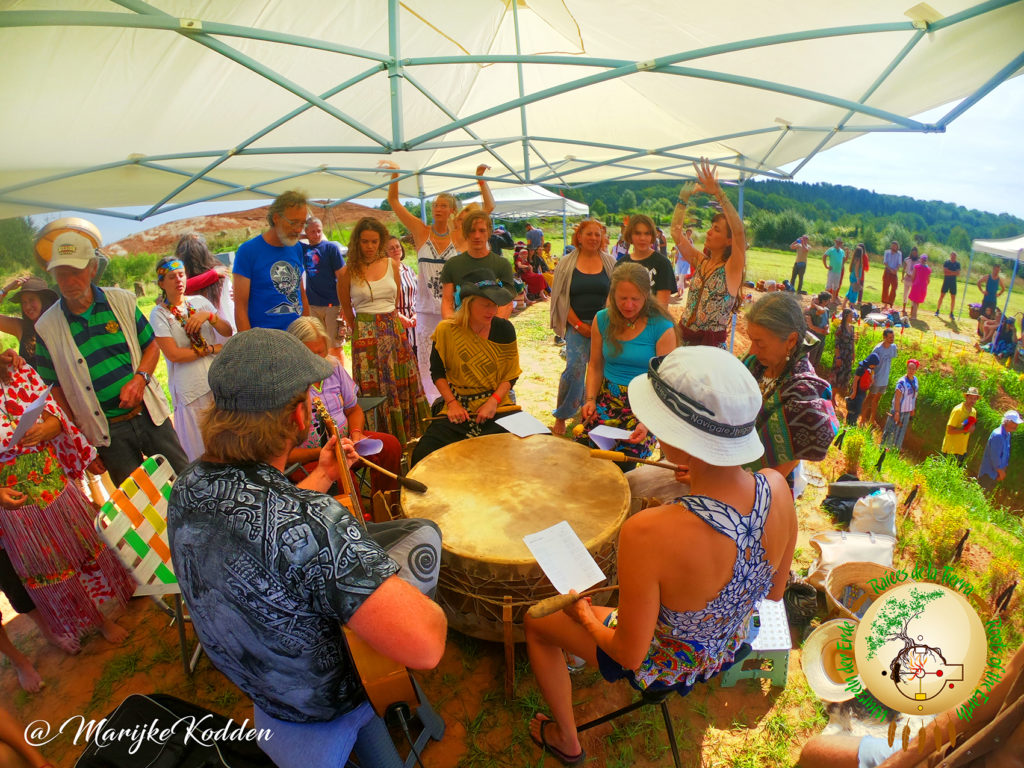
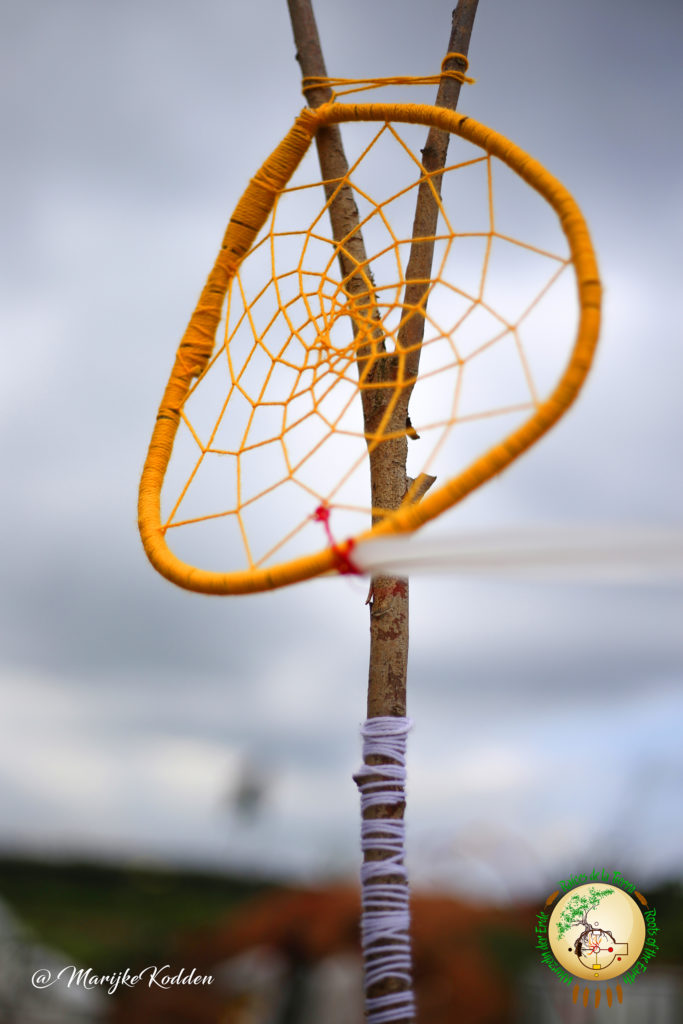
The moon women – women in their menstruation – also have a special role in the ceremony. They keep the connection to Mother Earth in the ceremony. Her precious gift to mother earth strengthens the earth mother, protects the ceremony and opens up a strong field of power. The moon women centre the power inward to hold the sacred space. Due to the deepened perception and connection in the lunar time, the prayers of the moon women are extraordinary powerful and have great blessing. They embody the power of grandmother moon.
The sacred fire
At sunrise on the first day, the fire at the sweat lodge area is lit. This is a very special sacred moment. The fire is greeted with prayers and many songs. The participants go to the sweat lodge for a first cleaning.
Later in the morning, the fire is carried from the sweat lodge area into the Kiva and the Kiva is inaugurated. The fires burn for four days and three nights continuously in the middle of the Kiva and at the sweat lodge area.
The sweat lodge goes over four rounds every day. The first two rounds take place in the morning and the third and fourth round in the evening. The cleansing power of the sweat lodge extends over the whole day. All participants can thus connect to the ceremony.
The keeper of the Kiva
The keeper of the Kiva opens the room for the elders. He pays attention to the many details that are so important for a good ceremony. He carries the legacy and spirit of the founder and first guardian of this ceremony, Reymundo Tigre Perez.

